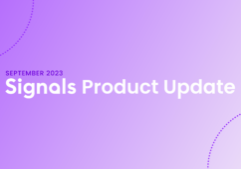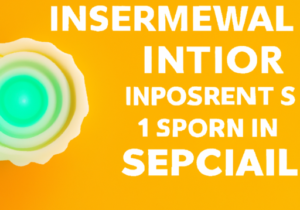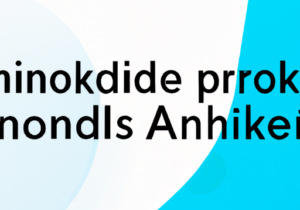Big decisions take time, just like it takes buyers time to consider your product. But what if you could speed that process up? Right now, simply having an amazing pitch isn’t enough—no matter how compelling it sounds—if you don’t truly understand your buyer. In a market packed with competitors, understanding and actively listening to your buyers is more critical than ever.
So, where do buying signals come in?
Buying signals provide a competitive edge, especially in sales. They allow you to connect more deeply with prospects, customers, and anyone involved in the decision-making process. The foundation of these connections relies on three essentials: trust, value, and relevance. By leveraging buying signals, you can build these factors faster and more effectively. Read on to learn how.
What are buying signals?
Buying signals are the behaviors and actions that prospects display when they’re interested in your product or service. Recognizing these signals gives you a look into their mindset.
Incorporating buying signals into your strategies can unlock powerful benefits, particularly for sales and marketing teams. They allow you to see what’s working, identify content that resonates, and understand what drives conversions. Leveraging these insights can significantly shorten your sales cycle, strengthen go-to-market (GTM) and account-based marketing (ABM) strategies, and drive better outcomes across your initiatives.
Why are Buying Signals Important?
Some might say, 'You don’t need signals to succeed—people have been selling for years without them.' But let’s be honest: today’s buyers have access to endless information through the internet, social media, platforms like G2, and more. They’re far more informed than they were five years ago, which is why marketing and sales must keep evolving. The market is shifting, buyers aren’t one-size-fits-all, and we need to continuously refine our strategies to deliver real value.
That’s where buying signals come in. They offer a behind-the-scenes view of buyer behavior, showing us more than just interest; they reveal how buyers engage with our resources—like when a visitor explores all our blogs on email marketing. These insights allow us to craft an approach that truly resonates.
Modern buyers expect a personalized, proactive experience. With countless sales messages competing for attention every day, cutting through the noise with tailored outreach is a powerful advantage. Buying signals enable a targeted, strategic approach, saving time and resources. No more guessing games—now we can see what buyers want, and intuition alone won’t cut it in today’s data-driven market. We’re entering a new era where buying signals are essential for building effective sales and marketing strategies, strengthening customer relationships, and staying ahead in an evolving landscape.
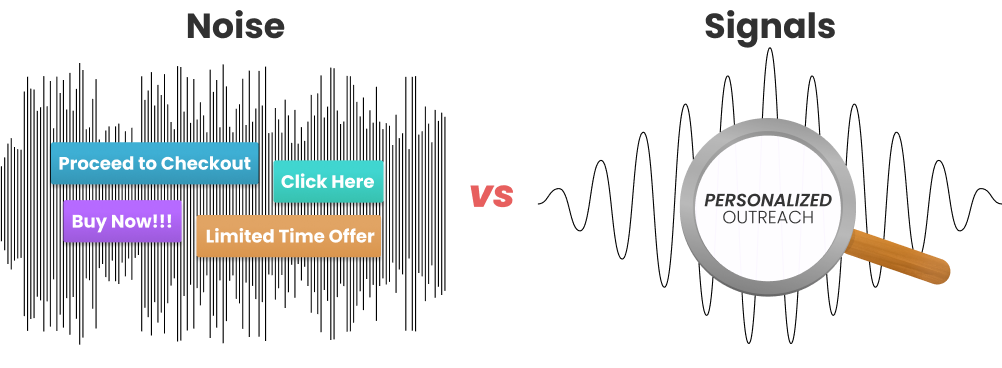
Leveraging B2B Intent Data to Identify Buying Signals
So, where do buying signals come from? They’re primarily derived from buyer intent data—information indicating potential interest based on activities like page visits, content downloads, and event attendance.
This data is analyzed to understand a buyer’s intent by identifying trends, popular content, and frequently visited pages. Buyer intent data offers deeper insights into prospects’ interests, which in turn helps improve targeting, shorten sales cycles, prioritize leads, and reduce missed opportunities.
For an in-depth look, check out Buyer Intent Data 101.
Buying Signals vs. Intent Signals: A Quick Breakdown
Understanding buying signals versus intent signals is key to targeting prospects effectively and building trust throughout the process. Here’s a deeper look at how they differ, how to act on each, and why building trust matters.
- Buying Signals indicate a prospect’s readiness to purchase. These are concrete actions, like requesting a demo, that show they’re seriously considering your solution.
- Intent Signals reveal general interest or engagement but don’t necessarily indicate an immediate buying decision. Actions like reading blog posts, downloading white papers, or viewing multiple pages suggest curiosity or a potential need but not a direct readiness to purchase.
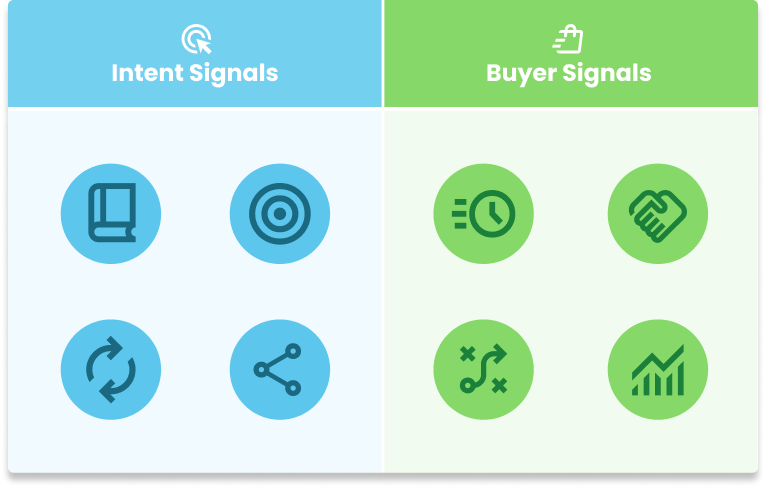
How to Treat Buying and Intent Signals Differently
- For Intent Signals: The goal is to nurture rather than push. If prospects are downloading content like eBooks, blocking access can damage trust. Think about it—if you’re looking for an eBook on SEO but are forced to jump through multiple forms, it feels more like a hurdle than a benefit. Offering content freely is a demand generation strategy, allowing prospects to learn more without pressure. Use tactics like retargeting, sharing helpful resources, and gentle calls to action (like “Check out our latest blog on [their topic of interest]”). This approach gradually moves the prospect towards buying at a natural, healthy pace.
- For Buying Signals: A more direct approach works best. When a prospect shows buying intent, act quickly and strategically. Reaching out promptly with a relevant solution demonstrates that you’re listening to their needs. By using tools to capture and analyze these signals, you can personalize your responses to enhance their buying experience, building a strong relationship rooted in trust—a key factor in their decision-making.
Building Trust with Buyers
Building trust with your buyers is essential, yet it’s an area where many companies miss the mark, sometimes coming across as too sales-focused. Here’s how to build trust based on each type of signal:
- With Intent Signals: Focus on offering valuable, accessible content without barriers. The more freely you share your knowledge, the more trust you build with potential buyers. This strategy reinforces your credibility and reliability, qualities people look for when considering a purchase.
- With Buying Signals: Here, trust is built through personalization. Irrelevant, generic outreach can be a big turnoff. Rather than waiting for the prospect to reach out, use the signals you’ve collected to make the first move, tailoring your outreach to their needs. This approach shows that you’ve taken the time to understand them and are not just pushing for a quick sale.
Diving Deeper: Behavioral vs. Digital Signals and the Three Levels of Intent
Now that we’ve outlined intent and buying signals, let’s explore the different types of signals—behavioral vs. digital—and dive into the three levels of intent to understand how to connect with buyers even more effectively.
By recognizing and responding to these signals with the right balance of nurturing, personalization, and timeliness, you’ll build stronger, trust-based relationships that lead to successful, long-term customer partnerships.
Behavioral vs. Digital Signals
Intent signals come in two forms: digital and behavioral.
Digital Intent Signals reflect online actions that show interest in your products. These signals are typically data-backed and trackable through digital tools. Examples include:
- Website Engagement: Tracking visits, time spent on pages, or content downloads.
- Email Interactions: Monitoring email opens, link clicks, or responses.
- Social Media Activity: Engaging with posts, following profiles, or joining discussions.
- Content Consumption: Viewing blogs, webinars, or product videos.
These digital signals provide actionable data, making it easier to tailor your outreach and achieve shorter sales cycles.
Behavioral Buying Signals involve actions that suggest a prospect’s readiness to buy. They typically emerge from direct interactions, offering insight into what the prospect truly wants. Examples include:
- Direct Inquiries: Questions about pricing, implementation, or purchase logistics.
- Competitive Mention: Comparing your offerings with competitors.
- Personal Interactions: Participation in sales calls, involving stakeholders, or expressing specific pain points.
- Trial Usage: Exploring product trials to assess features.
These behavioral signals provide insights that you can use to connect at the right time.
Understanding both types of signals is essential for effectively applying them to your sales and marketing strategies. Each type of signal requires a different approach: intent signals are particularly useful for shaping marketing campaigns and content, while sales intent signals facilitate connection, trust-building, and timely selling. We’ll explore how to handle these signals differently in marketing versus sales later on.
It's crucial to distinguish between buying signals and intent signals, as not all signals indicate immediate readiness to make a purchase. Misinterpreting the awareness and interest stages versus the action and purchase stages can lead to premature selling, which could undermine your signal-based selling strategy.
Levels of Intent
Let’s delve into the three levels of intent and review examples of how to approach each effectively. You can think of these levels of intent like traffic lights: Low intent (Red) means “not yet,” Medium intent (Yellow) signals “proceed with caution,” and High intent (Green) indicates “full speed ahead.”

Low Intent: A low-intent prospect is typically someone who hasn’t spent much time on your site or engaged deeply with your content. They may be in the early research phase, exploring multiple products. At this stage, avoid pushing a hard sell. Instead, find ways to establish a connection—perhaps by sharing relevant insights or content to help guide their research.
Medium Intent: A medium-intent prospect has shown interest by triggering intent signals at least twice in the past 90 days (we'll discuss triggers shortly). Ideally, you've already connected with this account; if not, it’s time to personalize your outreach. Send content tailored to their interests, such as case studies, blogs, or videos, to keep them engaged and move them closer to a decision.
High Intent: A high-intent prospect is highly engaged, spending significant time on your site and interacting with key content. They’re likely in the buying stage, where buying signals become most critical. At this point, they may be looking into demos, pricing, or implementation details. This is the time to offer strategic options to encourage a deeper dive—personalized offers, targeted content, or exclusive tools can make a powerful impact.
Examples of B2B Intent Signals
Understanding intent signals can provide insights into when and how a prospect may be ready to engage. Here are some key examples that frequently surface in B2B:
High-Value Content Engagement
- Frequent Downloads of In-Depth Resources: When a prospect repeatedly accesses detailed content, they’re likely assessing your company’s expertise and considering you as a viable solution.
- Webinar and Event Participation: Attending multiple webinars or virtual events hosted by your brand is a strong intent signal, often indicating that a decision-maker is interested in learning directly from your team.
Website Navigation Patterns
- Visits to Pricing or Product Comparison Pages: These are some of the most telling digital signals, suggesting that a visitor may be narrowing down options and comparing you with competitors. Visits to these pages often correlate with a high purchase intent.
- Multiple Team Members from the Same Company Visiting Your Site: When several individuals from the same organization visit your website within a short period, it’s a strong indicator that a buying committee is investigating your solution.
Direct Engagement with Sales and Support Teams
- Frequent Interactions with Sales or Customer Support: Reaching out with questions about features, pricing, or specific use cases often signals a shift to later-stage intent. Prospects who frequently engage with your sales team are likely looking for reassurance and detailed answers to finalize a decision.
- Trials or Demo Requests: A request for a product demo or free trial is typically a signal of high intent. Prospects at this stage are often on the verge of making a decision and want hands-on experience with the product.
Third-Party Intent Data
- Surging Searches on Industry Keywords: Some tools can reveal which companies are actively searching for keywords related to your product or service, showing that these organizations may be in the early stages of their buying journey.
- Engagement with Competitor Content: Discovering that a prospect has engaged with your competitor's content can indicate they’re comparing options and open to learning about alternatives.
Building a Strategy with Buyer Signals
Incorporating buying signals into your strategy builds trust, enhances engagement, and creates stronger customer relationships. But how do you get started?
- Capture Signals: Use analytics tools on your website, social media, and email platforms to gather data.
- Analyze Patterns: Look for trends. Maybe buyers gravitate toward step-by-step guides, or certain pages consistently attract them first.
- Interpret Intent: Buying signals often reveal their own intentions. For instance:
- Product Demos: Prospects requesting demos likely have a strong interest in seeing the product firsthand.
- Email Engagement: Frequent opens and link clicks suggest active evaluation.
- Social Media Follows: Leads following your profiles may be keeping tabs on updates, new features, or industry insights.
- Contact Forms: Filling out forms for quotes or more information is a clear sign of intent.
- Resource Downloads: Downloading eBooks or product guides indicates they’re gathering detailed information for decision-making.
- Personalize: After you capture and analyze signals, you need to engage them. With a peek into their insights and patterns, you can build content and campaigns.
Recognizing and acting on these buying signals can refine your strategies and elevate customer engagement.

Acting on Buying Signals to Close More Deals
Now that you’ve identified buying signals, it’s time to incorporate them. Leveraging these signals not only enhances your selling skills but also fosters stronger relationships by tailoring your outreach. Here are a couple of effective strategies to get you started:
- Personalized Trials: If a prospect checks out pricing information, consider offering a tailored product trial. This makes the prospect feel seen, valued, and more connected to your product.
- Targeted Follow-Ups: If someone downloads an eBook, your sales team can send a follow-up email with case studies or detailed product information relevant to their needs.
- Prioritize Leads: By analyzing buying signals, you can identify patterns that reveal which buyers are most likely to convert. This insight allows you to prioritize leads effectively, engaging with the right prospects at the optimal time.
- Buyer Journey Mapping Based on Signals: Enhance the buyer journey by analyzing the steps recent buyers have taken. Which content did they view first? Where did they spend the most time? With these insights, you can focus your time and resources on the content and interactions that truly convert prospects into buyers.
These strategies enhance the buyer journey, helping you see what resonates with prospects and allowing you to refine content that falls short.
Another way to leverage buying signals in sales is by setting up triggers. Triggers can alert your sales team when a prospect, who’s already been engaging with your product, visits a key page like pricing. This prompt signals the team to reach out at just the right moment, answer any questions, and keep the prospect moving forward, so the opportunity doesn’t go cold.
Buyer Signals in Marketing
While signals are powerful in sales, they add even greater value to your marketing strategy. By value, we mean refined targeting and delivering content that truly resonates. And this isn’t just for account-based marketing (ABM); signals play a role much earlier.
They offer insights into accounts in the awareness and research stages of the buying journey, helping to identify prospects more likely to convert. Knowing who is exploring your product allows you to focus sales and marketing efforts more effectively.
Here’s how you can use intent signals to enhance marketing:
- High-Value Content: Intent signals reveal the types of content people engage with most. This insight helps you keep producing the content that resonates and drives engagement.
- Improved Campaigns: With a clearer view of what prospects are interested in, you can create campaigns that hit the mark—targeted, relevant, and free of unnecessary fluff.
- Sales and Marketing Alignment: Intent signals make it easier for marketing and sales to work together. By identifying accounts with high engagement, marketing can pass along well-qualified leads to sales, improving the handoff and boosting conversion potential. Historically, sales and marketing often struggle to stay aligned, but intent signals bridge that gap, allowing both teams to work toward shared goals.
By integrating buying signals into both sales and marketing strategies, you’re not just reacting to interest—you’re proactively creating meaningful connections with your buyers.
These insights allow you to anticipate needs, deliver relevant content, and engage at precisely the right moments, setting your team apart in a crowded market. As you continue refining these approaches, you’ll not only see improved conversion rates but also foster long-term relationships that are built on genuine understanding and value. Embrace this data-driven approach, and turn buyer intent into strategic action that elevates both your customer experience and your sales outcomes
Connect On Deeper Level with you Buyers
Signal based intelligence is essential in today’s market. For years, sales and marketing teams have relied on guesswork, demographics, and psychographics. While those methods still have their place, it’s time to level up our strategies with a more tailored and efficient approach.
The Signals Way
Signals captures buying signals across multiple platforms, seamlessly integrating with your existing tools to collect data from website visits. This provides valuable insights into your prospects’ behaviors and interests, helping you identify patterns that reveal their needs.
Some of our key features include:
- Contact Discovery
- Gain free contact lookups with our Snapshot plan. These lookups identify potential buyers by looking up contacts of recently visited companies and engaging with your website content.
- Audience Segmentation
- Segment your audience by industry, source domain, site visits, number of contacts, and more. This allows a focused view of different market segments, helping you better understand and target your audience.
- Workflow Automations
- Automate workflows using bots, emails, and alerts to create targeted campaigns that engage your web traffic and expand your sales funnel. Integrate these workflows into your daily processes to save time and eliminate guesswork, building a data-driven playbook for success.
- Real-Time Tracking
- Receive real-time alerts for critical actions, like when a lost opportunity revisits your site. Re-engage prospects instantly or set up meetings while they’re still browsing. This ensures no opportunity slips through the cracks.
With these features and more, Signals helps you build a data-backed GTM strategy. Stop guessing which strategies work—see the buying signals in action and make informed decisions to drive results.
By utilizing Signals, you can also deliver personalized content that resonates with your audience. Addressing specific interests creates a smoother buying experience, fostering stronger relationships and improving conversion rates.
Ready to turn buying signals into actionable insights? Book a demo with us to learn how to gain real-time visibility into your visitors, track their interactions, and prioritize leads to optimize your outreach strategy.
READ MORE
Start seeing your Buyers' signals
Signals is helping companies automate, grow, and close sales pipeline with industry-leading predictive intent scoring, lead generation, and real-time engagement.









